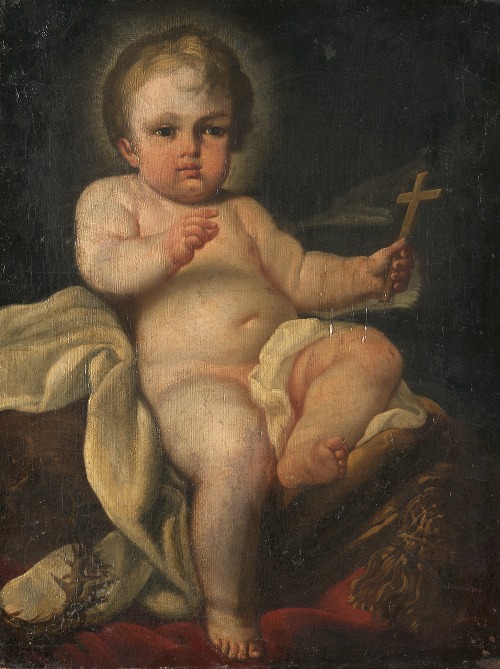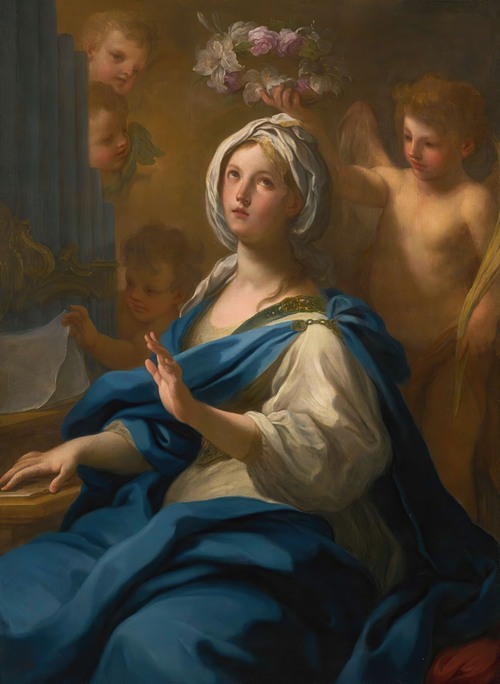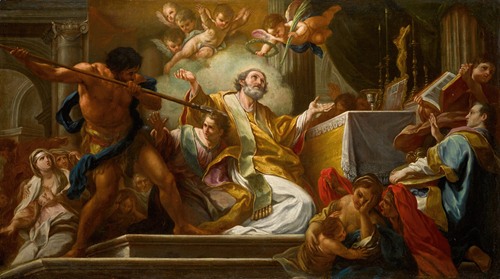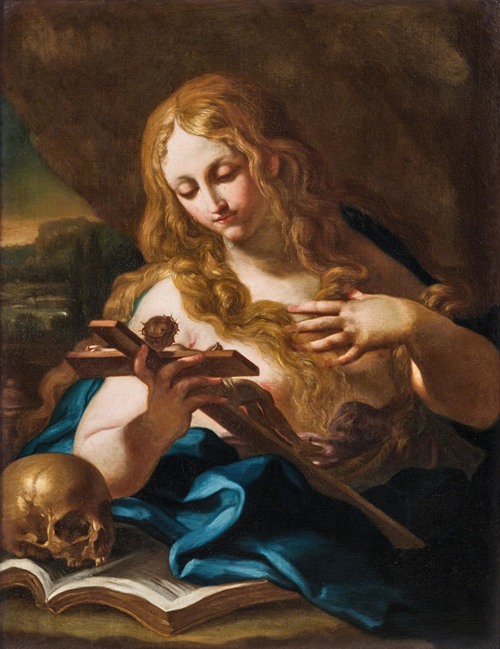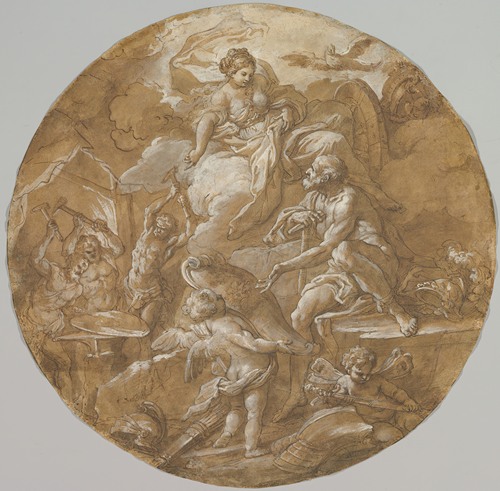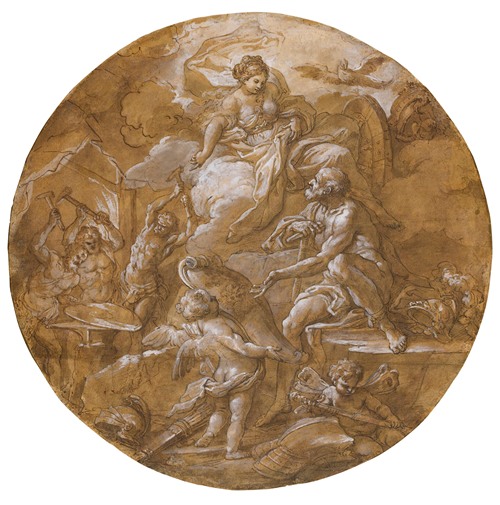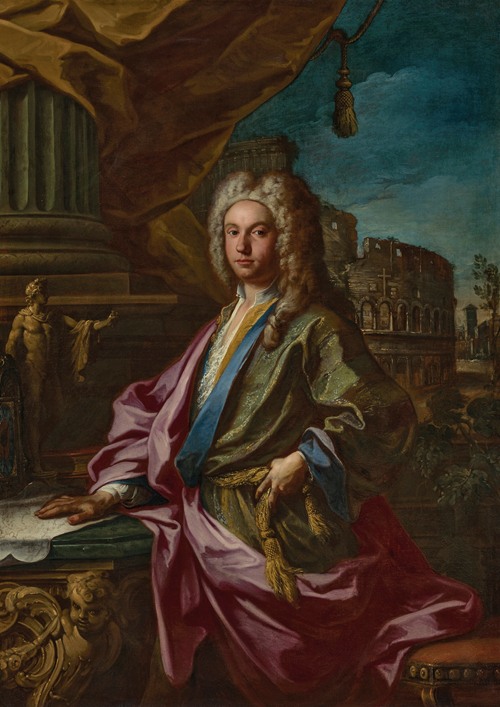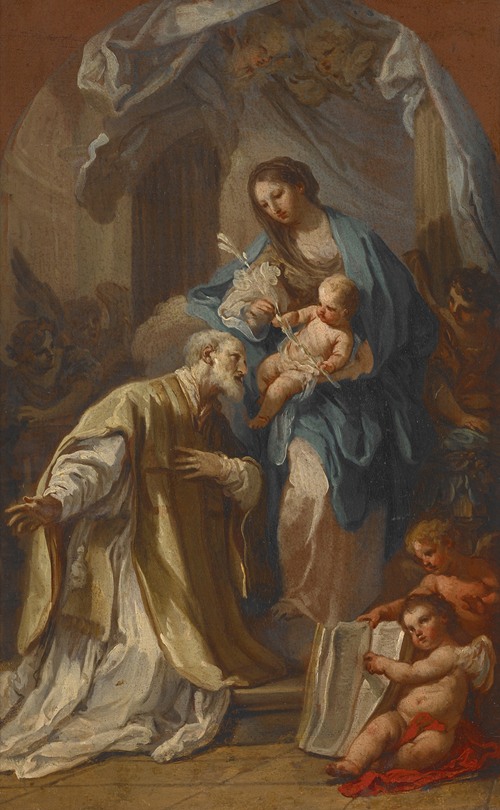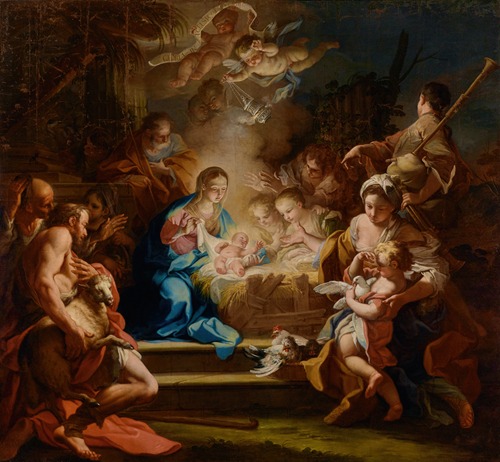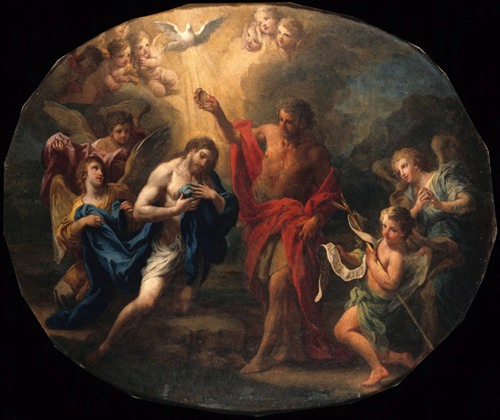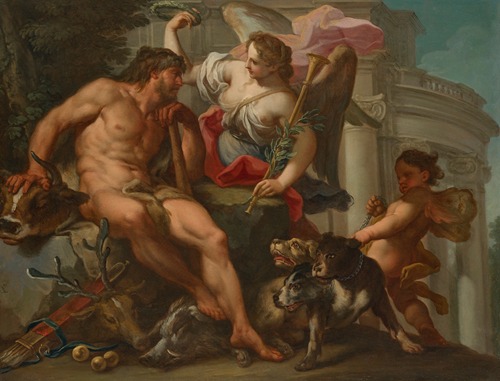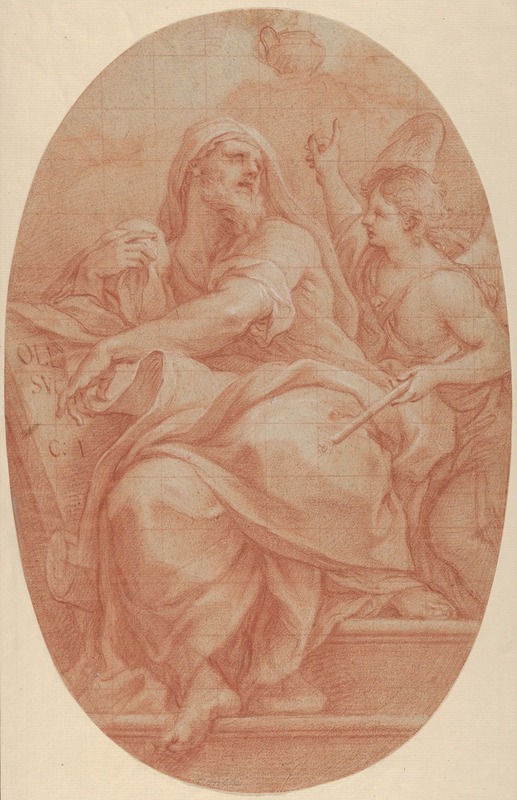
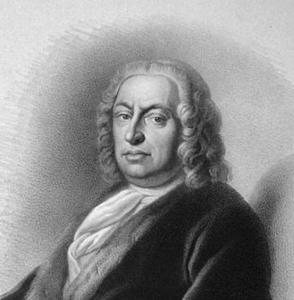
Sebastiano Conca was an Italian painter.
He was born at Gaeta, then part of the Kingdom of Naples, and apprenticed in Naples under Francesco Solimena. In 1706, along with his brother Giovanni, who acted as his assistant, he settled in Rome, where for several years he worked only in chalk, to improve his drawing. He was patronized by the Cardinal Ottoboni, who introduced him to Clement XI, who commissioned him a well-received Jeremiah painted for the church of St. John Lateran. He also painted an Assunta for the church of Santi Luca e Martina in Rome.
Conca was knighted by the pope. He collaborated with Carlo Maratta in the Coronation of Santa Cecilia(1721–24) in the namesake church of Santa Cecilia in Trastevere. In 1718 he was elected to the Accademia di San Luca, and was its director in 1729–1731, replacing Camillo Rusconi as Principe in 1732. He was also elected Principe in 1739–1741.
His painting was strongly influenced by the Baroque painter Luca Giordano. Among Conca's pupils there were Pompeo Battoni, Andrea Casali, Placido Campoli, Corrado Giaquinto, Gregorio Giusti, Gaetano Lapis, Salvatore Monosilio, Litterio Paladini, Francesco Preziao, Rosalba Maria Salvioni, Gasparo Serenari, Agostino Masucci, Domenico Giomi, and the Bavarian religious painter Franz Georg Hermann. Sebastiano's brother, Giovanni Conca (died in 1764), painted the main altarpiece of the Madonna of the Rosary and St Dominic for the church of San Domenico, Urbino.
He received widespread official acclaim and patronage. He worked for a period of time for the Savoy family in Turin on the Oratory of San Filippo and Santa Teresa, in the Venaria (1721–1725), for Basilica di Superga (1726), and Royal Palace (1733). He painted the frescoes of Probatica (Pool of Siloam), in the Ospedale di Santa Maria della Scala (hospital) of Siena. In Genoa, he painted the large allegorical canvases of the Palazzo Lomellini-Doria (1738–1740).
In 1739, he published a guide to painting: Ammonimenti (or Admonishments), which blended moralistic advice with technique. He returned to Naples in 1752, and enjoyed the royal patronage of Charles III. His studio was prodigious and he painted frescoes for the Church of Santa Chiara (1752–1754), five canvases for the Chapel in Caserta Palace (now lost), as well as many others including for the Benedictines of Aversa (1761), a History of Saint Francis of Paola for the Sanctuary of Saint Maria di Pozzano of Castellammare di Stabia (1762–1763), and many other altarpieces. He painted till late in life.
